26 Best Plants for Attracting Pollinators (With Pictures)
-
Pete Ortiz
- Last updated:
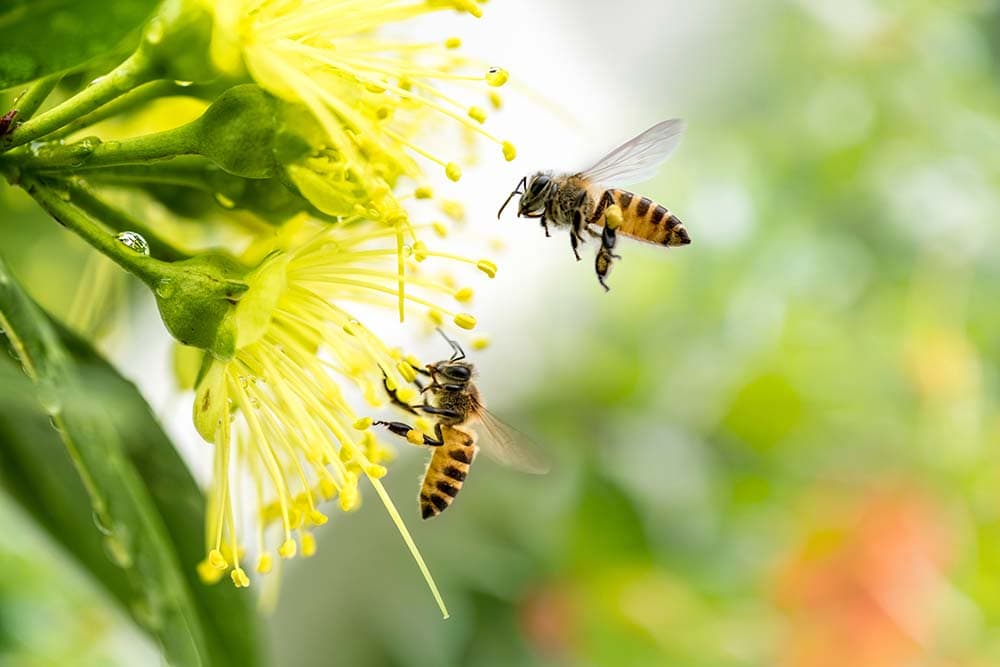
Pollinators are animals that transfer pollen from a male flower to a female flower, therefore encouraging fertilization and growth of new flowers. They include bees, wasps, butterflies, beetles, and even moths, and encouraging them to your garden not only helps the spread and growth of flowers but can also bring your garden alive thanks to the existence of the pollinators themselves. The best way to encourage pollinators is to attract them with flowers and plants that they like.
Below are the best plants for attracting pollinators to your garden.
The 26 Best Plants for Attracting Pollinators
1. Anise Hyssop
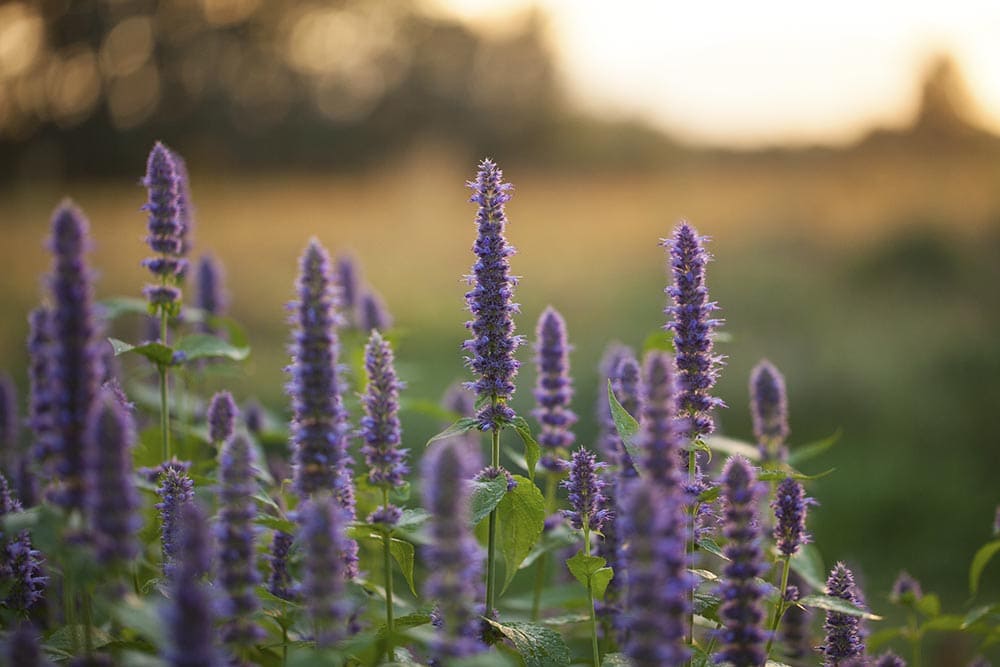
| Latin name: | Agastache foeniculum |
| Attracts: | Bees, Butterflies, Hummingbirds |
The anise hyssop is a member of the mint family that has fragrant foliage and tall purple or blue flowers. It attracts bees and will also encourage hummingbirds and butterflies, so they offer great variety to any bed. The anise hyssop, which is not related to the hyssop, will grow to a height of around 3 feet and spread a similar distance.
2. Aster

| Latin name: | Aster |
| Attracts: | Bees, Hoverflies, Beetles |
“Aster” means “star,” and this member of the daisy family gets its name from the shape of its flower. It is a bright flower that helps attract pollinators including bees, beetles, and hoverflies. The flower does prefer full sun but can grow well in partial shade, too. The aster will flower in late summer.
3. Bee Balm
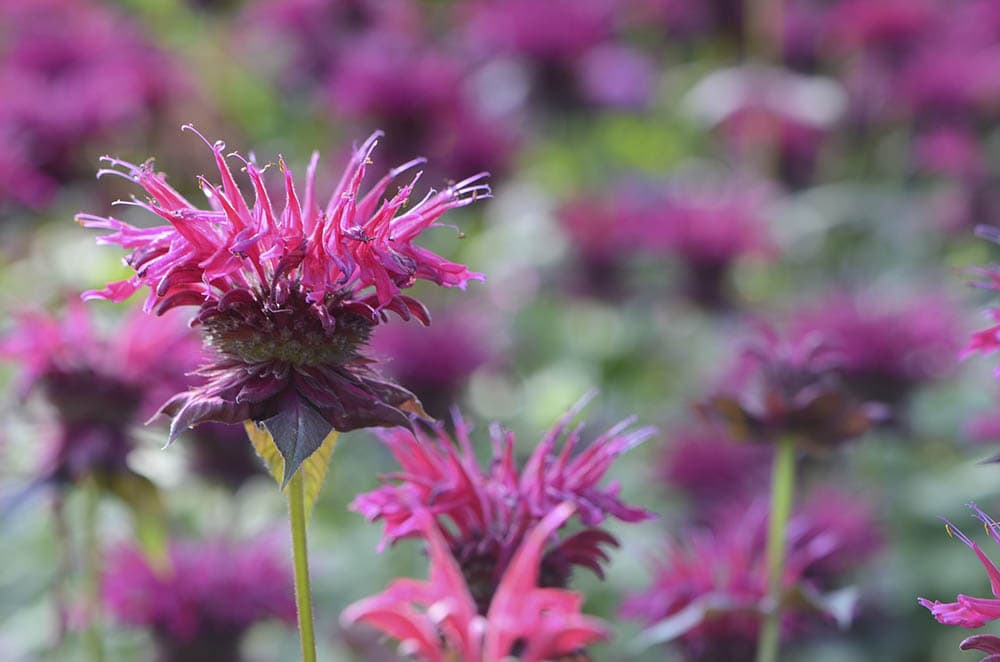
| Latin name: | Monarda didyma |
| Attracts: | Bees, Butterflies, Hummingbirds |
Bee balm, also known as bergamot or monarda, is another member of the mint family and another flower that will attract bees, butterflies, and hummingbirds to your garden. When crushed, the leaves of the bee balm flower smell like bergamot orange and are reminiscent of Earl Grey tea.
4. Black-Eyed Susan
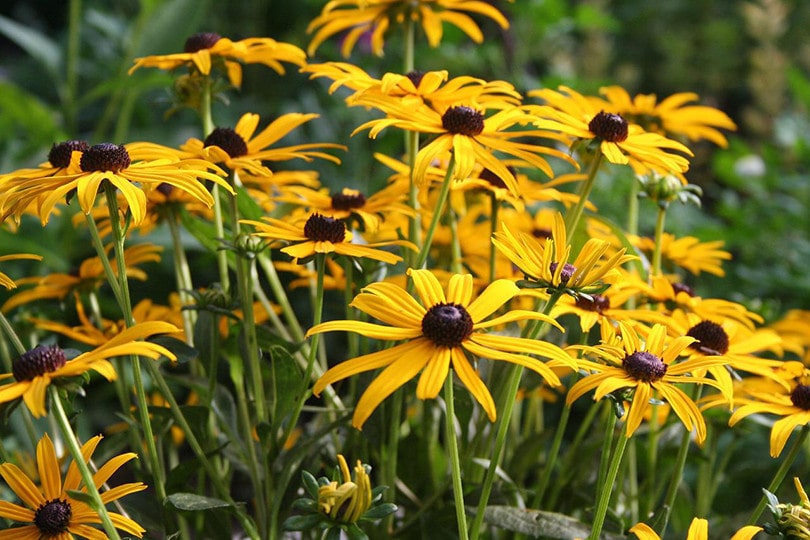
| Latin name: | Rudbeckia |
| Attracts: | Bees |
Black-eyed Susans are easy to grow, hardy, and especially effective at attracting bees to your garden. Although it is most commonly seen with bright yellow petals, there are variants with orange or red petals, as well as those that are bi-colored, so you can create a varied display in your flower bed.
5. Blazing Star

| Latin name: | Liatris spicata |
| Attracts: | Bees, Hoverflies, Wasps, Butterflies |
The blazing star is a perennial that can grow up to five feet tall with towering purple flowers. This species will attract a wide range of pollinators and insects to your garden, and their color means that they are often used in flower bouquets as well as to add color to plant beds.
6. Borage

| Latin name: | Borago officinalis |
| Attracts: | Bees, Wasps |
Borage, known commonly as the star flower, has a great many uses. Its leaves can be eaten and are said to taste like cucumbers, while its seeds can be turned into a topical treatment for hair and skin. These pretty blue flowers also attract bees and wasps, therefore helping to combat pests like tomato worms and cabbage worms.
7. Butterfly Bush
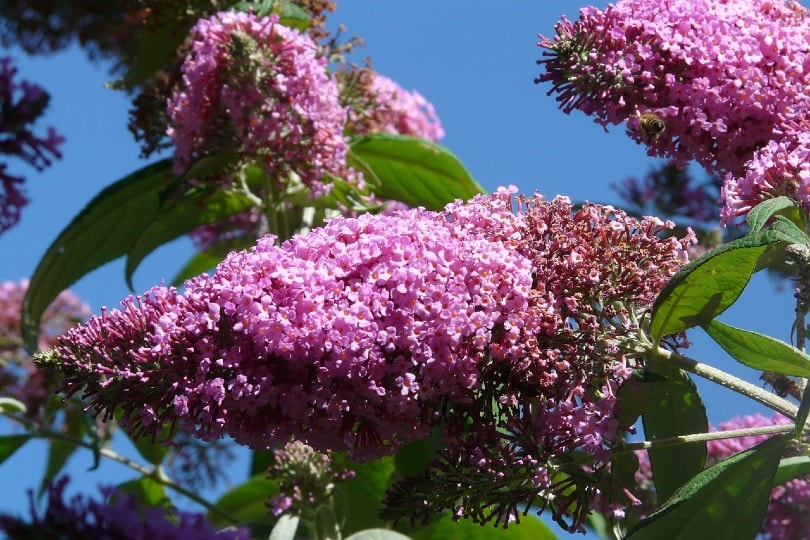
| Latin name: | Buddleia |
| Attracts: | Butterflies, Bees, Wasps |
The buddleia, which is often referred to as the butterfly bush because of its ability to attract the winged pollinator, is a large shrub that can grow to heights of 10 feet or more. The bush does require some maintenance to ensure it doesn’t take over the garden, and removing dead flowers will encourage new ones to grow in just a few weeks.
8. Calendula
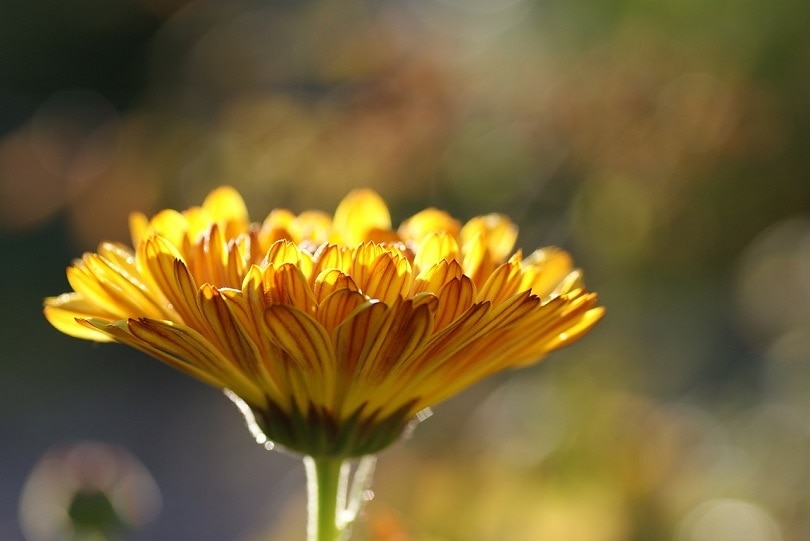
| Latin name: | Calendula |
| Attracts: | Bees |
Calendula, which is another edible plant and has been used for many years, especially to flavor stews and soups, is especially effective at attracting honeybees to your garden. It may also be known as pot marigold and its petals tend to be either yellow or orange in color.
9. Catmint
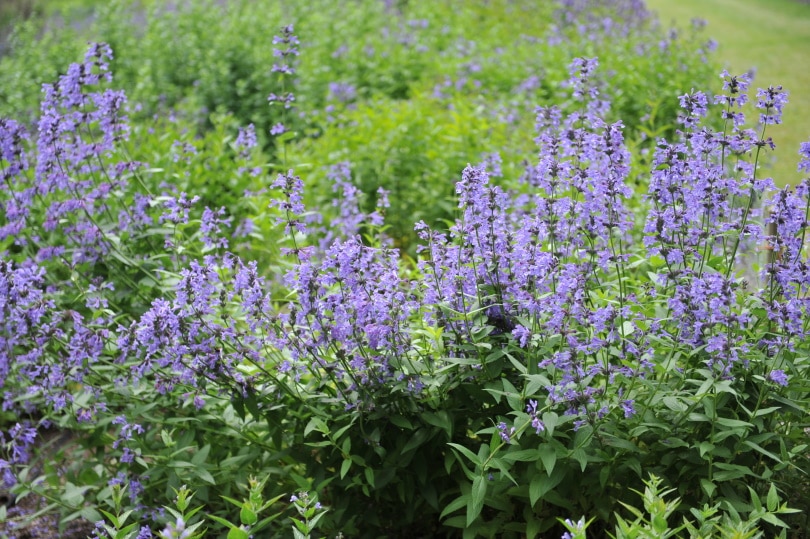
| Latin name: | Nepeta x faassenii |
| Attracts: | Bees |
Some people shy away from growing catmint because of its tendency to attract cats, but this hardy and low-maintenance plant is also appealing to bees and other pollinators. Its small purple flower heads grow up the full length of the stem, which means it is a good way to introduce a patch of color to a flower bed.
10. Coneflower
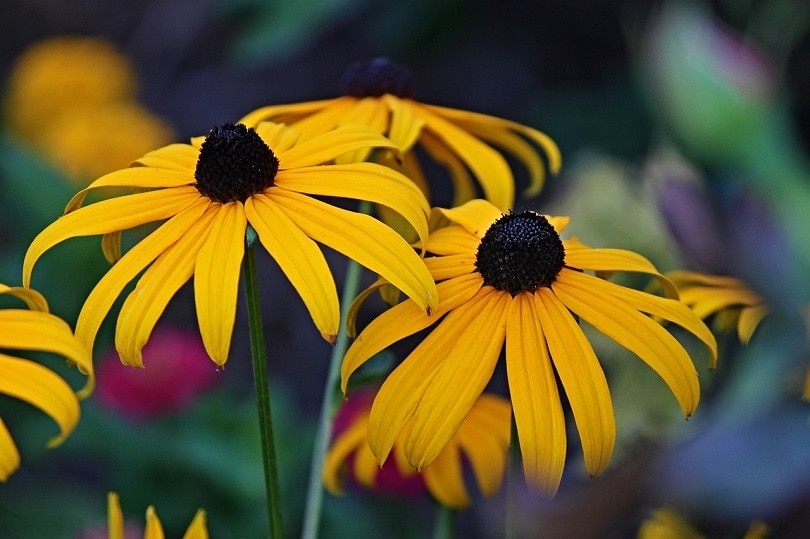
| Latin name: | Echinacea |
| Attracts: | Butterflies, Bees |
The coneflower, or echinacea, is another multipurpose flower. It has been used medicinally for many years, especially for its ability to aid the immune system. It has a cone-shaped head, which gives it its common name of coneflower, and this head attracts bees and butterflies. It is considered a hardy plant once it has matured and settled in.
11. Crocus
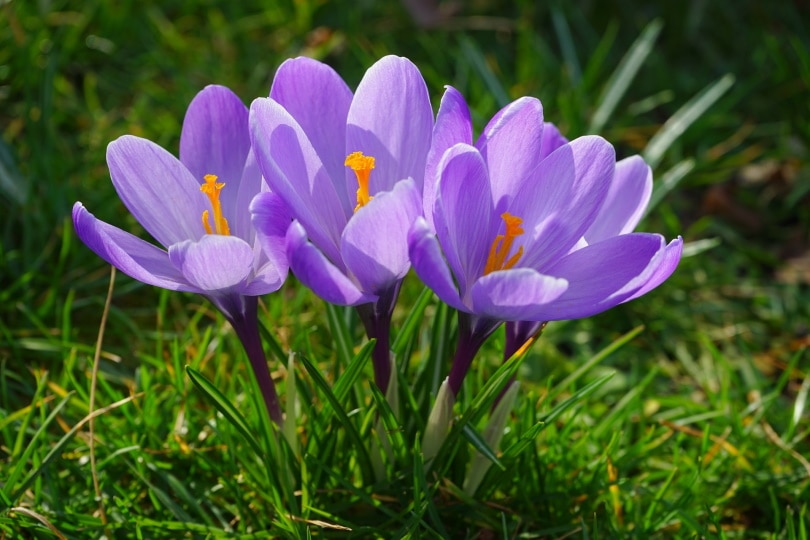
| Latin name: | Crocus |
| Attracts: | Bees |
There are dozens of species of crocus, including those that give us saffron and those that attract bees, although many species are also known to attract squirrels, so if squirrels are abundant in your area, look for one that is resistant. Crocuses like full sun or partial shade and tend to be very colorful.
12. Dahlia
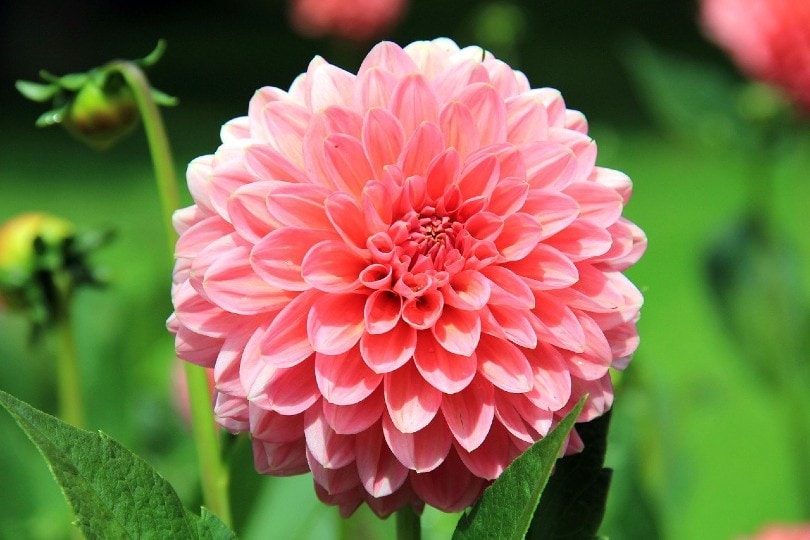
| Latin name: | Dahlia |
| Attracts: | Butterflies, Hummingbirds |
Not all varieties of dahlia are suitable for attracting pollinators. Make sure the blooms do not have petals that are packed too close together or your garden pollinators will not be able to access the pollen. With the right varieties, though, you can expect to bring hummingbirds and butterflies to your garden.
13. Daisy

| Latin name: | Bellis perennis |
| Attracts: | Bees |
Daisies are widely recognized and beautiful wildflowers. Although they typically have white petals, other varieties can have yellow or pink petals so you can introduce a good variety of colors. As a wildflower, daisies will grow with very little maintenance once they are established, and they will attract bees once in bloom.
14. Foothill Penstemon
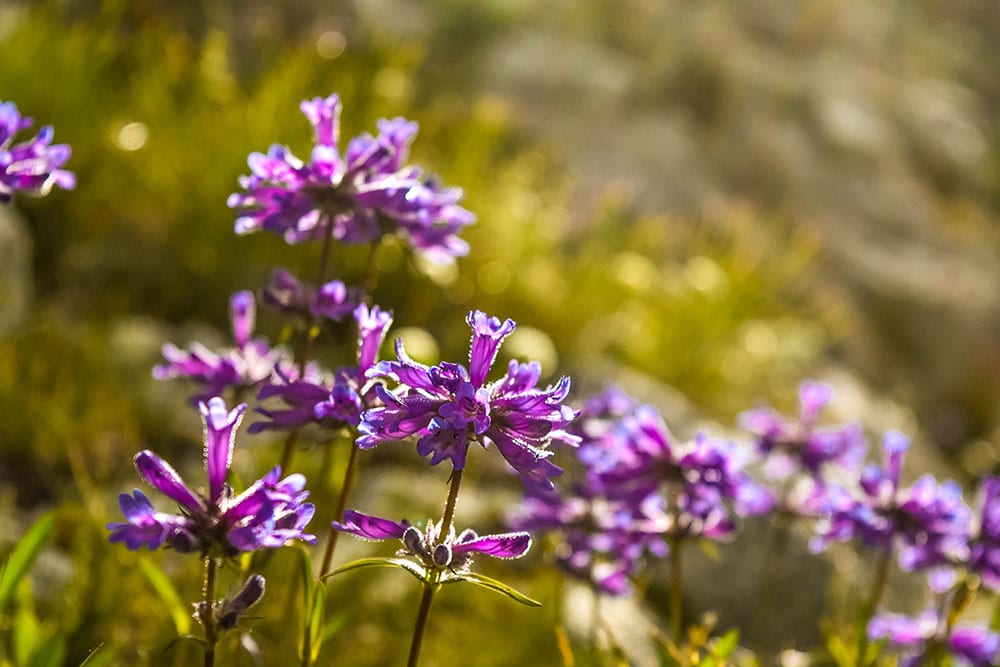
| Latin name: | Penstemon heterophyllus |
| Attracts: | Butterflies, Bees, Hummingbirds |
Foothill penstemon is another wildflower most commonly seen in California, and it grows especially well in coastal gardens thanks to the free draining soil. It has purple flowers that attract a good variety of pollinators, including long-tongued bees, butterflies, and hummingbirds.
15. Foxglove
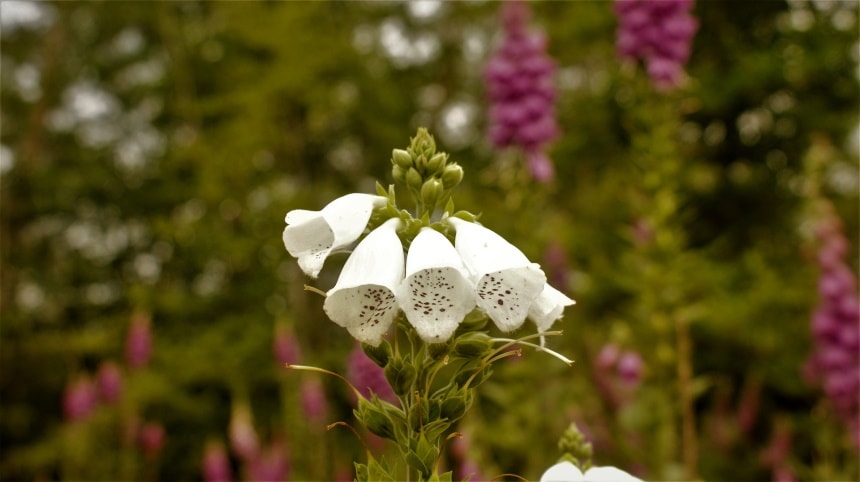
| Latin name: | Digitalis purpurea |
| Attracts: | Bees |
Foxgloves are a biennial plant, which means that they will flower every 2 years. Plant them 2 years in a row and you can enjoy a bloom every year. These purple flowers are especially popular with bees that will land on the lower lip of the tubular flower and then climb up to gather pollen.
16. Giant Hyssop
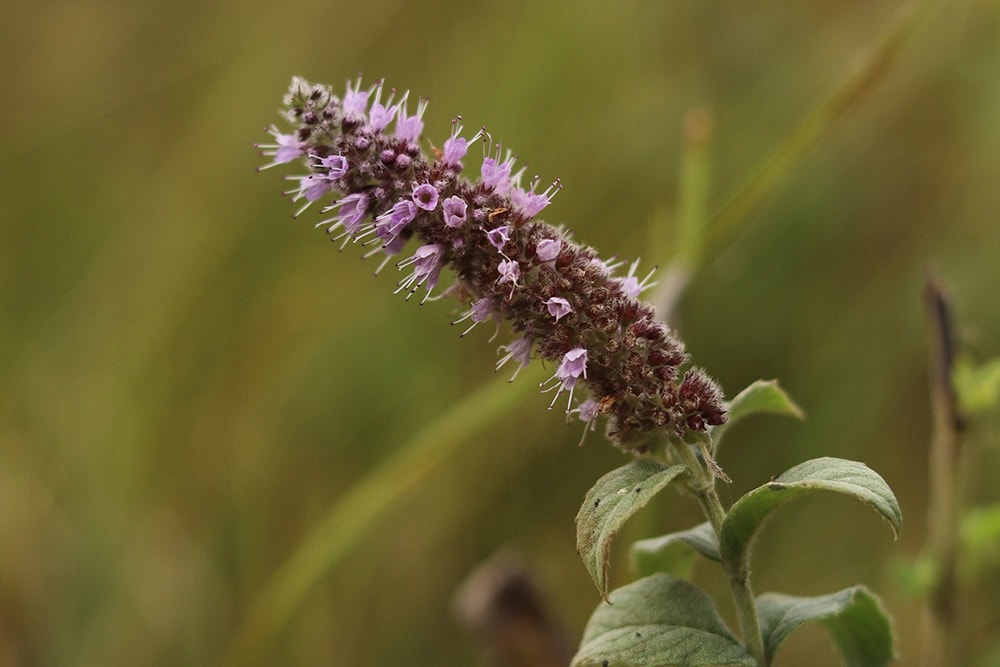
| Latin name: | Agastache foeniculum |
| Attracts: | Bees, Hummingbirds, Butterflies, Moths |
Whatever type of pollinator you are trying to attract, the giant hyssop pretty much has you covered. This member of the mint family has bright blue flowers and is often grown for the scent that the plant gives off, as well as for its ornamental properties.
17. Goldenrod
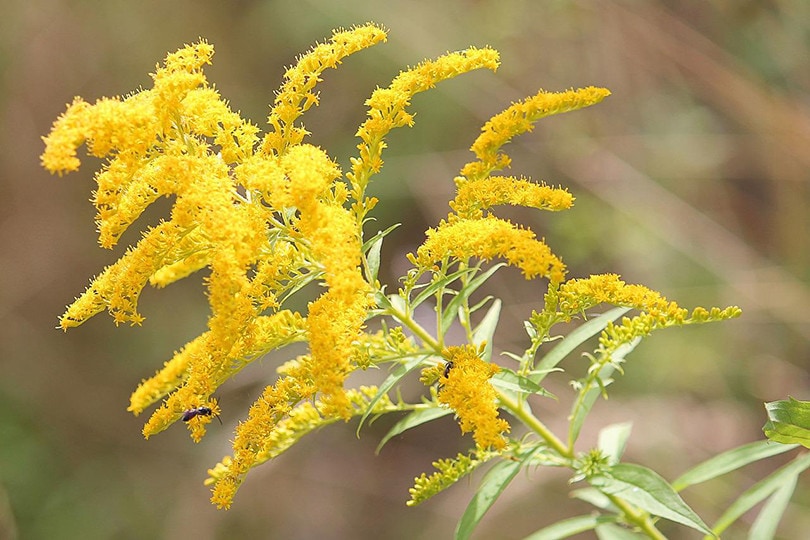
| Latin name: | Solidago |
| Attracts: | Bees, Flies, Wasps, Beetles, Butterflies |
The herbaceous goldenrod plant is a good choice of plant for pollinators because it is a late bloomer, and it can attract bees and other insects after the rest of your stock has died down. The wildflower grows in woodlands and on prairies. Although it prefers full sun, it will also grow in partial shade.
18. Heliotrope
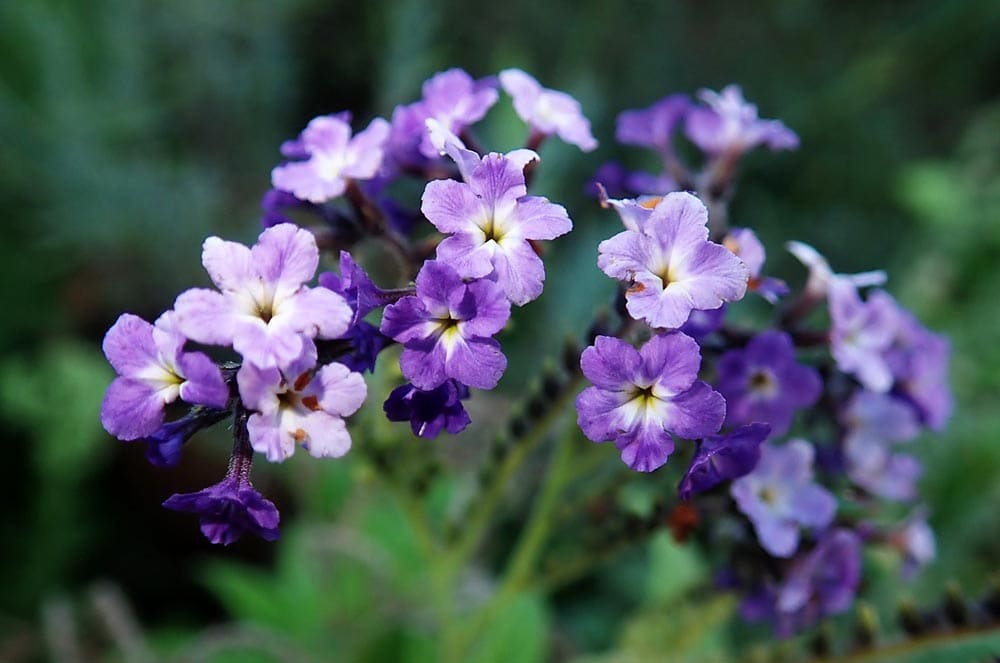
| Latin name: | Heliotropium |
| Attracts: | Bees |
While you might plant heliotrope to attract bees, you can also enjoy its beautiful aroma. It is usually an annual and has small purple flowers when it blooms. It benefits from full sun and needs good drainage to ensure that it will grow well.
19. Lavender
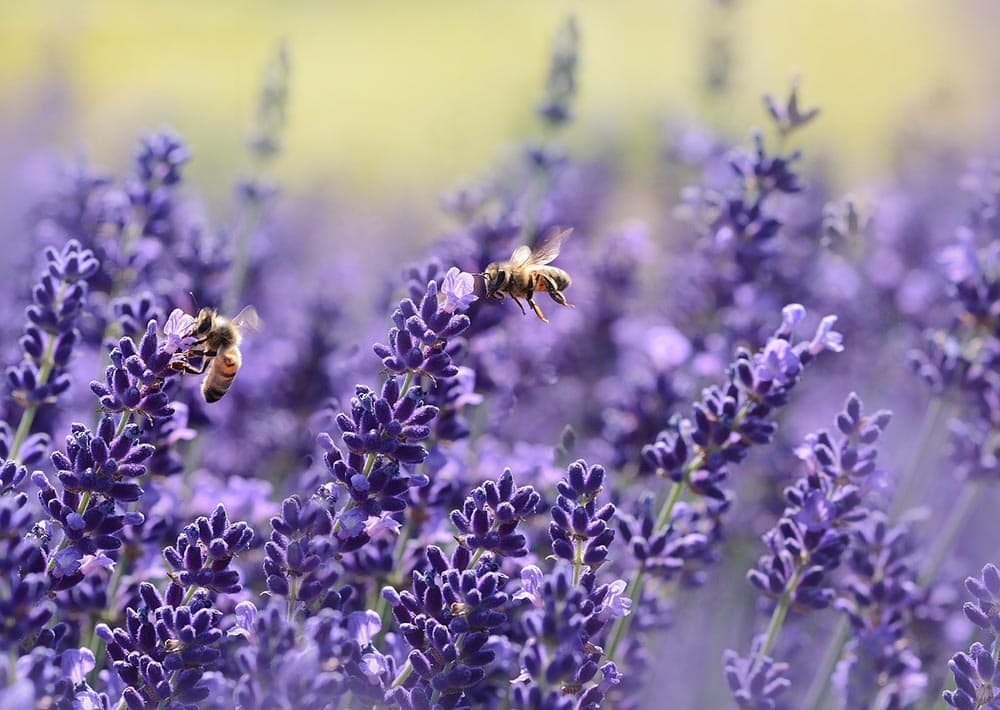
| Latin name: | Lavandula angustifolia |
| Attracts: | Bees, Butterflies, Hoverflies |
Lavender is a very popular plant that is grown throughout the world. It is especially popular for its smell, which will be evident whenever there is a draft or when you brush against the plant. Not only is it popular with gardeners and as an essential oil, but it is also popular with bees and butterflies.
20. Marigold

| Latin name: | Tagetes |
| Attracts: | Flies, Moths, Butterflies |
Marigold is a colorful, annual flower that, as well as being edible, puts on a beautifully vibrant display when in bloom. There is some debate over its effectiveness in attracting bees. Although some growers claim it deters bees, others claim the opposite. But marigolds are known to attract flies, moths, and butterflies to the garden.
21. Milkweed

| Latin name: | Asclepia |
| Attracts: | Butterflies, Bees, Hummingbirds |
Although it can be challenging to grow during the early stages, milkweed is especially popular with butterflies and will also attract other pollinators including bees and hummingbirds. They have very distinctive flowers that are usually red and yellow.
22. Phlox
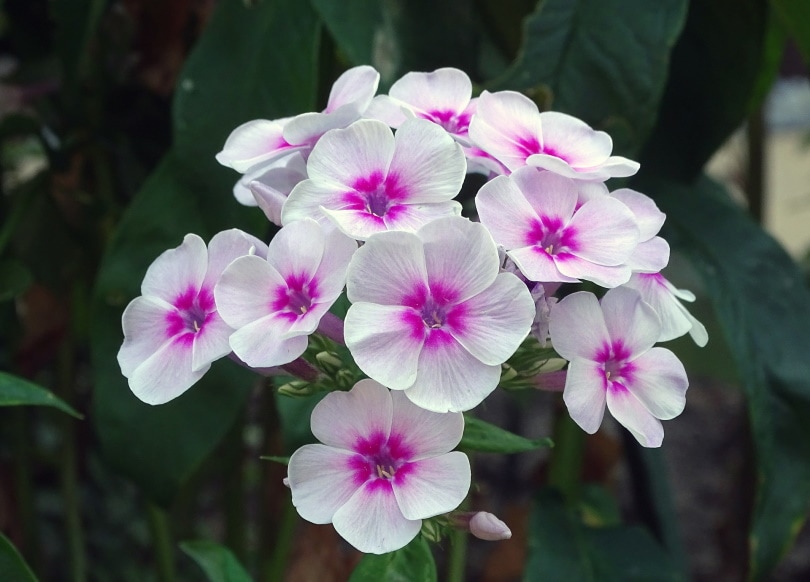
| Latin name: | Paniculata |
| Attracts: | Bees |
Phlox has pink or purple flowers, and they are highly efficient at attracting bees during late summer. It is a low-growing flower that prefers partial or even full shade, which means that it can do especially well when grown under some of your taller pollinator plants.
23. Sedum
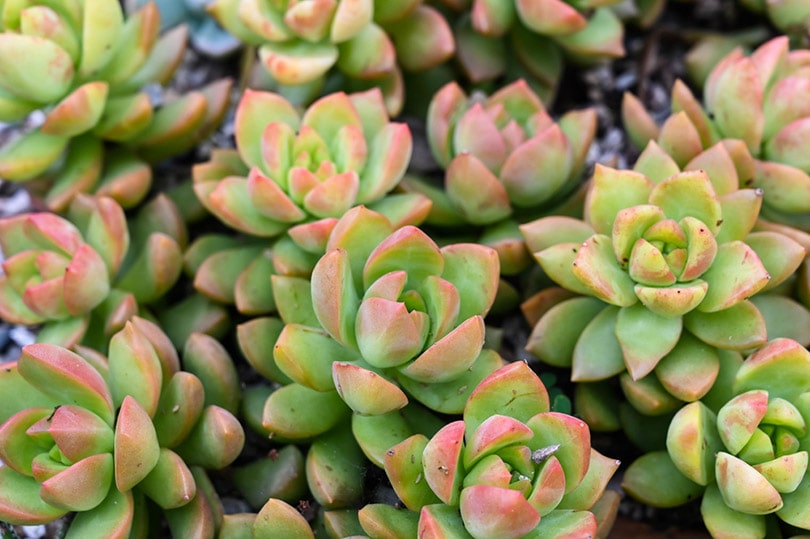
| Latin name: | Sedum |
| Attracts: | Bees, Butterflies |
Sedum can be fall or summer flowering plants, and both do a good job of attracting pollinators. They are especially popular with bumblebees because they have shorter tongues and can easily get to the accessible pollen of this plant. Sedum prefers full sun and is tolerant of high levels of heat and sun.
24. Sunflower
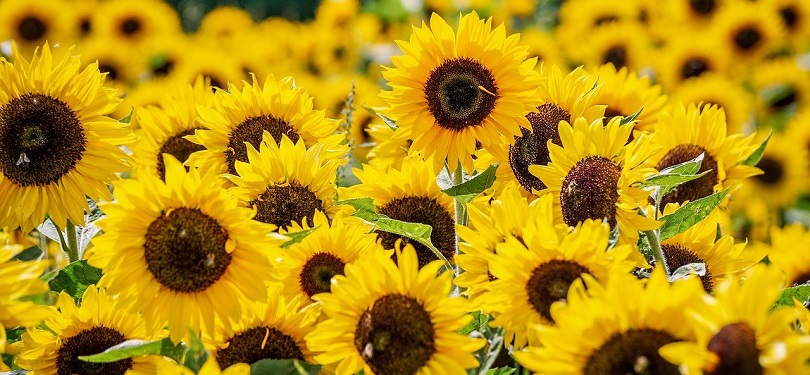
| Latin name: | Helianthus |
| Attracts: | Bees |
The sunflower is a bright and impactful flower that can grow several feet in height. The plant is especially popular with bees, and its seeds are a common food source for a lot of species of birds. The sunflower can be grown virtually anywhere, which makes it a good choice for virtually any garden.
25. Sweet Joe-Pye Weed

| Latin name: | Eutrochium purpureum |
| Attracts: | Butterflies, Bees |
Especially popular with butterflies, sweet Joe-pye weed has long been used for its medicinal properties, but its light pink flowers are attractive, and they are efficient at getting the attention of butterflies and bees.
26. Zinnia
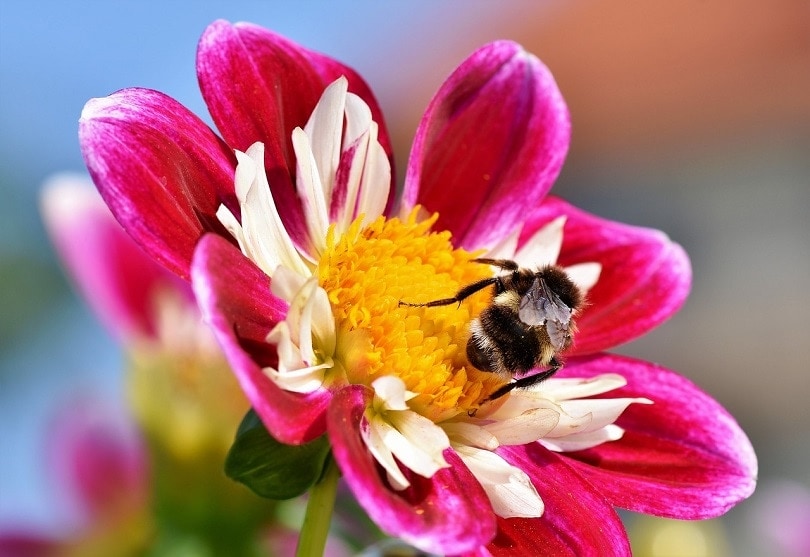
| Latin name: | Zinnia |
| Attracts: | Bees, Hoverflies |
Zinnias have large flowers and, because they come in a wide spectrum of colors, they are a great addition to a garden. What’s more, they are also popular with bees and hoverflies. Zinnia prefers full sun and will flower throughout summer or potentially even into early fall so they can provide food for your pollinators for several months.
Final Thoughts
Pollinators are animals and insects that move pollen from one plant to another, effectively ensuring the pollination of those plants. Common pollinators include bees and butterflies, but also include moths and hummingbirds. The 26 plant varieties above are popular with one or more varieties of pollinators, but many others do exist.
- https://www.homesandgardens.com/gardens/plants-for-pollinators
- https://www.birdsandblooms.com/gardening/garden-bugs/top-10-flowers-that-attract-bees/
- https://gardenerspath.com/plants/flowers/best-flowers-for-pollinators/#Dahlia
- https://hort.extension.wisc.edu/articles/anise-hyssop-agastache-foeniculum
- https://www.gardeningetc.com/advice/bee-balm-care-and-growing-guide
- https://www.flowercouncil.co.uk/campaign/garden-plant-of-the-month-for-august-butterfly-bush
- https://www.healthline.com/nutrition/borage#what-it-is
- https://www.britannica.com/plant/Crocus
- https://www.almanac.com/plant/phlox
- https://www.gardenersworld.com/how-to/grow-plants/phlox-to-grow/
- https://www.thirskgardencentre.co.uk/news/1029/all-about-marigolds
- https://www.woodlandtrust.org.uk/trees-woods-and-wildlife/plants/wild-flowers/foxglove
Featured Image Credit: Mercury Studio, Shutterstock
Contents



